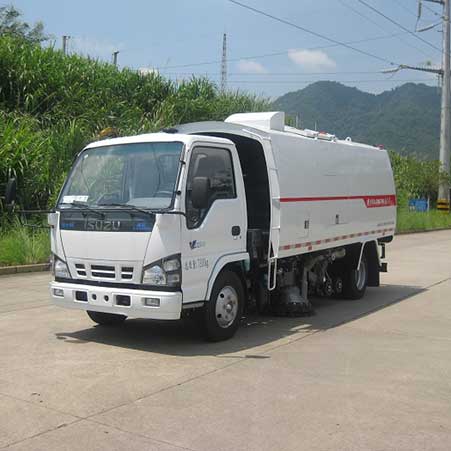A bustling hive of activity, where the rhythm of life plays out against a backdrop of towering buildings and bustling sidewalks. In this urban tapestry, the importance of clean streets cannot be overstated. They are the arteries of our cities, facilitating the flow of people, goods, and ideas. Clean streets not only enhance the aesthetic appeal of our urban landscapes but also play a vital role in ensuring public health and safety.
Enter the unsung heroes of urban cleanliness: mechanical sweeper trucks. These marvels of modern engineering are the frontline warriors in the battle against litter, debris, and grime. With their distinctive appearance and rhythmic hum, they traverse the city streets, sweeping away dirt and detritus with precision and efficiency.
History of Street Sweeping

But before the advent of mechanical sweeper trucks, keeping city streets clean was a labor-intensive task. Historically, the responsibility fell on the shoulders of manual laborers armed with brooms and dustpans. While their efforts were commendable, they were no match for the sheer scale of urbanization.
The first mechanical street sweeper appeared in the 19th century, heralding a new era in urban cleanliness. These early contraptions were crude by today’s standards, but they laid the foundation for the sophisticated machines we rely on today.
The Evolution of Mechanical Sweeper Trucks
Over the decades, mechanical sweeper trucks have undergone a remarkable transformation. What once resembled glorified horse-drawn carriages have evolved into sleek, high-tech vehicles equipped with state-of-the-art cleaning systems.
Advancements in engineering and technology have played a pivotal role in this evolution, enabling sweeper trucks to tackle a wide range of cleaning challenges with unprecedented efficiency. From powerful suction systems to rotating brushes, these trucks employ a variety of mechanisms to sweep, scrub, and sanitize city streets with precision.
How Mechanical Sweeper Trucks Work

But how do these mechanical marvels achieve such remarkable results? At their core, sweeper trucks rely on a combination of sweeping, suction, and filtration mechanisms to collect and contain debris. Rotating brushes dislodge dirt and litter from the surface of the road, while powerful vacuum systems suck up the debris and deposit it into onboard containers.
Benefits of Mechanical Sweeper Trucks
The benefits of mechanical sweeper trucks extend far beyond mere cleanliness. By removing dirt, debris, and pollutants from the streets, these trucks help mitigate the spread of disease, reduce air and water pollution, and enhance the overall quality of life for city residents.
Furthermore, by keeping storm drains clear of debris, sweeper trucks help prevent flooding during heavy rains—a critical consideration in flood-prone urban areas.
In conclusion, mechanical sweeper trucks are indispensable allies in the ongoing quest for clean, vibrant cities. With their tireless efforts and unwavering dedication, they ensure that our urban landscapes remain pristine and inviting for generations to come. So the next time you encounter one of these humble vehicles on the streets, take a moment to appreciate the vital role they play in keeping our cities spotless—one street at a time.






